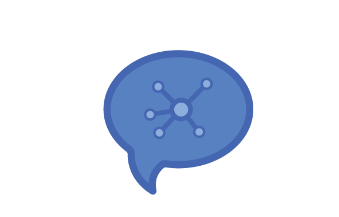Summary of study
Video
Presented by first author Catharina Vendl (1 min).
Poster
Presented at the international conference of the Wildlife Disease Association; Madison, Wisconsin, USA, July 23rd - 29th by first author Catharina Vendl.
Publication
The paper on this study was published in Environmental Pollution in July 2022.
 Aims
Aims
PFAS can be found in a large variety of different animal produce. This includes eggs, milk as well as the meat of farm animals (e.g., cattle, sheep), seafood and freshwater fish. Animals usually ingest PFAS with water or food. PFAS can then bind to proteins in the blood and muscles and therefore remain in the body for several years. Eating contaminated animal produce is one of the main exposure pathways for humans. PFAS exposure poses health risks, contributing to unfavourable conditions including obesity, breast cancer and premature births. Therefore, in this study we aimed to explore if different cooking techniques can reduce the concentration of PFAS in animal produce and therefore make them safer to consume.
 Methods
Methods
We did not perform any lab experiments ourselves. Instead, we used a well-established method of data synthesis, called meta-analysis. In this process we compiled the available evidence from published scientific studies that tested effects of different cooking methods on PFAS concentrations in diet items of animal origin. We then calculated the overall effect and looked at the factors that can influence how PFAS concentrations change during cooking.
We suspected the following factors to have an impact on the changes of PFAS concentrations in animal products: cooking time, cooking method (with oil, with water, no oil or water), volume of cooking liquid, cooking temperature and the carbon chain length of PFAS.
 Findings
Findings
We found a total of 10 studies that investigated weather cooking can reduce PFAS concentrations in seafood and fish. The researchers tested a range of different species (e.g., marine & freshwater fish, mussels, octopus, squid), PFAS types, cooking techniques and temperatures. Our meta-analysis showed that, on average, cooking reduced the concentrations of PFAS in seafood and fish by 27%. However, there were differences between individual studies due to cooking methods and PFAS properties.
Cooking time, the volume of the cooking media (oil or water) and the length of the PFAS carbon chain had the biggest impact on the changes of PFAS concentrations. On average, 10 min of cooking time reduced the PFAS concentration by 32 %, whereas 25 min of cooking led to a PFAS reduction by 80 %. Similarly, using 500 ml of cooking medium (oil or water) caused a PFAS concentration reduction of 55 %, whereas 10 L resulted in 87% less PFAS. We also found that the shorter the carbon chain of PFAS the higher the loss during cooking. Cooking temperature did not seem to have an impact on the effects of cooking.
It is important to note that we did not find any studies that investigated the effect of cooking on PFAS concentrations in any food items other than fish and seafood, although most other animal produce also contains PFAS (e.g., eggs, pork, chicken meat, milk). Such studies will need to be performed in the future.
 Conclusions
Conclusions
We conclude that cooking is a promising method to reduce PFAS concentrations in seafood and fish. The applied heat likely disrupts the biochemical bonds between the protein and PFAS and ‘sets PFAS free’. Cooking media act as solvents and flush out PFAS from the marine animal produce.
PFAS contamination reduction by 27% might not sound like a lot. However, this was only the average value we calculated from all studies in the analysis. This also included studies with very short cooking times and no added cooking media (oil or water). Importantly, you can remove a higher percentage of PFAS by changing some of the significant cooking parameters.
Ideally, you should cook your seafood or fish with water or oil as a cooking medium. The more cooking medium you apply the more PFAS could be eliminated in the cooking process. You should use enough of the medium to cover the seafood in a frying pan or pot. By doing so, you increase the contact surface between the cooked food and the cooking media, flushing out more PFAS. Make sure to discard the cooking medium afterwards as it likely contains the extracted PFAS. In addition, the longer you cook your seafood the more PFAS you will remove, although some may be left.
Please note that PFAS is only one of many persistent organic pollutants found in fish and seafood. There are many others including HCB, PCB and mirex. We did not investigate how the cooking process impacted these chemicals. Other studies and research syntheses will need to address such issues in the future.
Data and Code
Available on Github: https://github.com/ScienceCath/CookedFish_PFAS